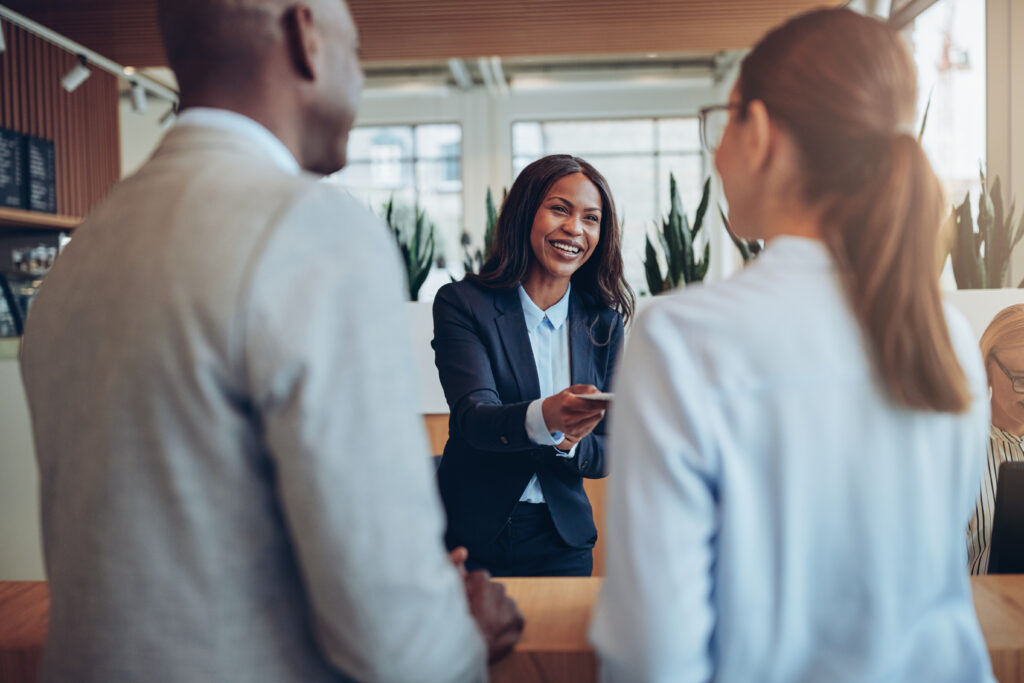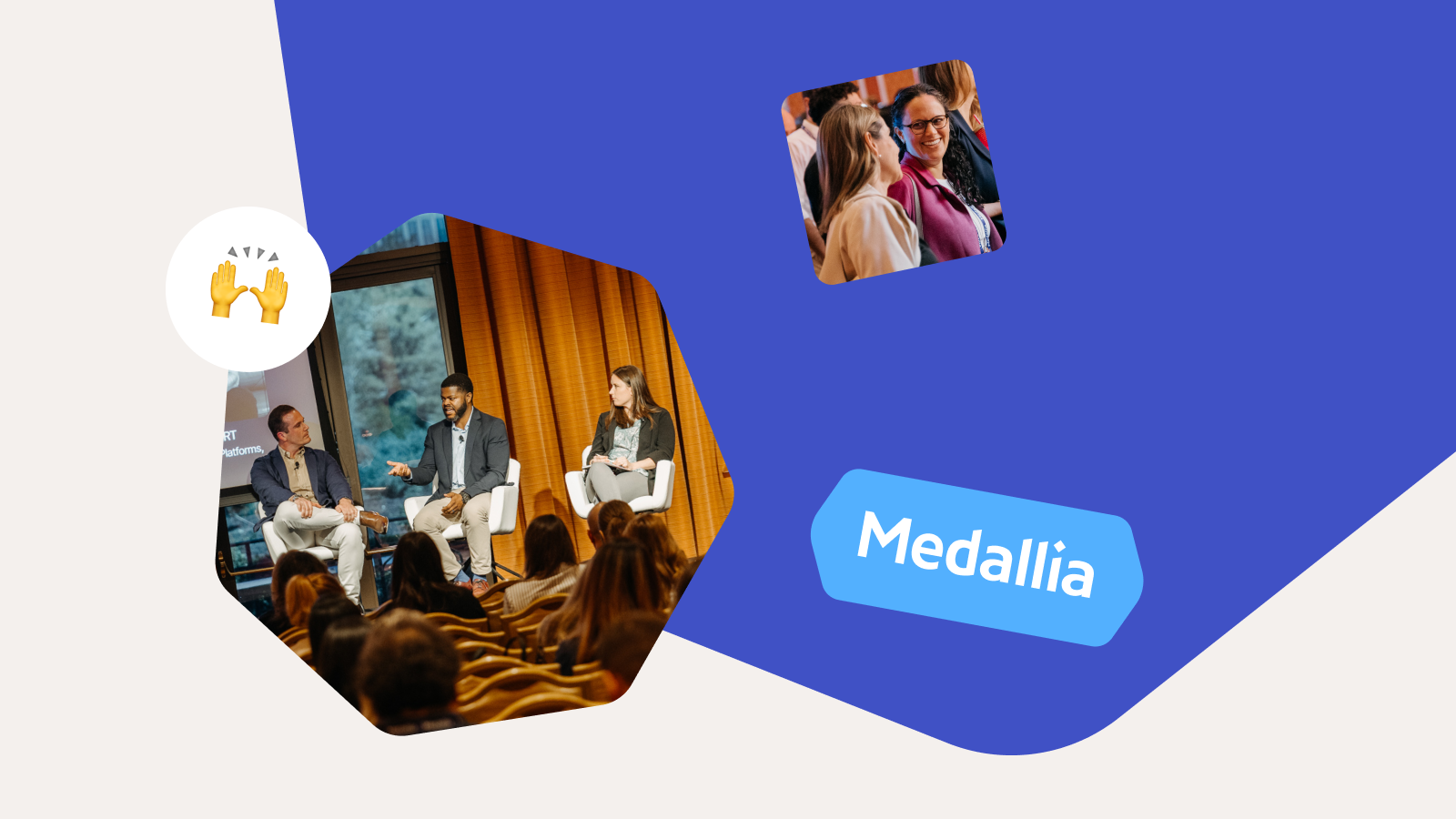Winning Personalization Examples for a Better Customer Experience
June 11, 2024
Customer Experience
Add these personalization examples to your playbook to improve customer experiences, drive customer loyalty, and accelerate financial outcomes for your brand.
With the benefits of personalized customer experiences including increased customer satisfaction and loyalty, stronger sales and revenue potential, and an improved brand image and reputation, it’s clear there’s value in finding the best personalization examples and adding them to your overall customer experience strategy. You’ve come to the right place for inspiration.
We’ve rounded up winning personalization examples from leading brands like Walgreens and advanced customer experience (CX) practitioners like Fred Reichheld, the top types of personalization that are most likely to have a positive impact on CX, and the kinds of personalization capabilities brands are investing in now to improve outcomes.
According to our 2024 State of CX Personalization Report, making customer experiences more personalized is a top 2024 priority for CX professionals. With these examples as your guide, you’ll be well on your way to achieving this goal.
4 Real-World Personalization Examples from CX Experts
With personalization a key area of focus for brands looking to increase trust and customer loyalty, Medallia recently sat down with Tracey Brown, EVP and President of Walgreens Retail and Chief Customer Officer at Walgreens, and Fred Reichheld, co-founder of the Net Promoter® System (NPS) and an Advisory Partner at Bain, for their insights on investing in personalization and best practices for creating successful personalization strategies.
Here are four personalization examples they shared from brands in the real world that are offering more meaningful interactions and experiences for customers at the individual level.
1. Personalized prescription pickup experience
Walgreens has done extensive research into the omnichannel customer experience and has found that their company’s typical customer journey involves eight steps, with four crucial touchpoints including when customers come in the store, the navigation experience, the checkout experience, and when customers pick up or purchase items.
“We’ve got to get those four touchpoints right because we know those are the ones that will drive people back to our store or pharmacy again, and those are the things where if we get those right, they will recommend us to a friend,” explains Brown.
That’s why the company decided to introduce a new initiative focused on one of these priority areas. To improve the prescription pickup experience for customers, Walgreens rolled out in-store kiosks that allow customers to check in before they get their items. Once the customer checks in, an algorithm works in the background to automatically triage their need and send the appropriate data to the pharmacy counter in real time. That way, by the time customers arrive at the checkout counter, the pharmacist has everything they need to tailor the experience.
2. Personalized in-flight experience
A leading international airline is going the extra mile to personalize experiences for frequent fliers by leveraging the company’s digital loyalty program data on site at the airport. Flight attendants have access to the information and are able to personalize their greetings for frequent fliers as a way to demonstrate that the brand cares about their customer loyalty. They may also share a special offer with frequent flyers who aren’t seated in first class, as an extra way to make them feel valued.
In addition, the flight crew takes the time to connect with travelers who may not have had the best experience on a previous flight to get feedback about their experience to share with leadership.
“It’s the melding together of the human with the digital that I think is most impressive,” explains Reichheld.
3. Leveraging employees to personalize experiences
Before brands had access to the technology that exists today, true customer experience pioneers personalized every interaction by getting to know their customers through human-to-human interactions. Brown shared that the founder of Walgreens, Charles Walgreen, famously would chat with customers over the phone to build relationships over time, and that’s still possible today for frontline staff.
Walgreens maximizes human interactions between employees and customers to improve personalization by democratizing individual team member knowledge about customers across the organization at scale, so that anyone can provide an intimate, personal interaction.
“The secret sauce for us is unlocking that human touch at the front line when the customer or patient is there interacting with our team,” says Brown.
This is an approach Reichheld says can be highly effective. He recommends getting started by finding out where customer-facing employees see the most opportunity.
Walgreens uses Medallia’s employee crowdsourcing platform to gather these kinds of insights by asking questions like, “What’s getting in the way of adding value for our customers?”
The team is “overflowing” with ideas straight from the front line that the corporate team is prioritizing, says Brown.
4. Listening to referring customers to personalize communications and experiences
AI-powered tools like Medallia’s Text Analytics and Speech Analytics can be incredibly powerful in listening in to customer conversations with your brand — across social, email, phone, video, SMS, in-app, and live chat — at scale.
Reichheld recommends using AI to find out what referring customers are saying about your company, and using these insights to personalize customer experiences, marketing outreach, advertising, and content based on what high-value customers appreciate about your products, services, and brand.
“The best way to understand how you’re being relevant to your customers is by listening to them when they’re telling other customers about you,” he explains.
Organizations can use these insights to train generative AI to build new content based on the emotions, sentiments, and themes that come up in conversations among your brand’s promoters.
“That’s a very powerful opportunity for generative AI,” says Reichheld.
Best Practices for Ensuring Personalization Success
Use Agile Prototyping
Walgreens implements agile prototyping to test out strategies designed to improve the experience at a pilot location. From there, they assess outcomes, make tweaks, and determine how to best scale their efforts.
Capture Customer and Employee Feedback and Refine Strategies Based on Insights
When launching new initiatives, the Walgreens team uses Medallia to capture feedback from employees and customers about the experience.
“We’ve enabled all of our frontline team members to actually have this tool front and center so that we can get real-time NPS® and really understand and assess what is actually not working from a customer perspective” while also hearing from team members about what’s not working for them, explains Brown.
Prioritize Personalization Efforts for High-Value Customers
Brown recommends investing in personalization efforts that are centered on improving experiences for high-value customers with the greatest potential to add more value to the organization.
For example, at Walgreens, a customer that regularly picks up prescriptions but doesn’t cross shop in the store presents untapped potential. Lower-priority segments might be those customers who are already bringing a lot of value to the business but who have more limited untapped potential and customers who bring no value today and who are not likely to bring value in the future.
“If I only have a dollar to spend, I’m going to allocate maybe 60 cents of that dollar to that group of customers that I know they’re spending well with us today, but they still have a lot of untapped potential,” says Brown. “That’s how we…think through personalization and designing experiences that are personalized. We use our value segmentation to help us with resource allocation.”
Tie Employee Performance Bonuses to CX Outcomes
At Walgreens, the company is prioritizing personalization and CX efforts by tying more of employees’ bonuses to the performance of the store — based on factors like NPS® and team member engagement.
6 Types of Personalization That Have a Positive Impact on the Customer Experience
As part of our special report, How Consumers Really Feel About Personalization, we asked 2,000 U.S. survey participants to rate a range of personalization examples on a scale of 1 to 5, indicating how positive an impact each has on their experience. Of 34 choices included, these are the top personalization factors consumers selected:
- Receiving special recognition, rewards, or treatment for customer loyalty (69% agree)
- Not having to repeat the information that’s already been provided when transferred to a new customer service agent (68% agree)
- Being offered forgiveness or understanding for late payments, returns, etc. (68% agree)
- Getting proactive help when an error or issue is detected (e.g., account is locked or service is down) (65% agree)
- Customer service agents being able to see customers’ full history of the times they’ve contacted the company (65% agree)
- Being treated to a special offer or free item on a customer’s birthday (65% agree)
Examples of CX Personalization
According to a Medallia and Customer Experience Professionals Association™ survey of 305 global CX professionals published in our 2024 State of CX Personalization Report, the majority of CX teams say they currently:
- Deliver proactive customer feedback requests based on interactions (76%)
- Serve up personalized content and recommendations (63%)
- Use personas or segmentation profiles to personalize experiences (58%)
- Leverage personalized experience orchestration tools (55%)
- Use automated marketing/closed loop communications for personalization (53%)
- Offer rewards and recognition based on individual customer information (50%)
Examples of customer data that brands are currently using for personalized experiences
As part of our Medallia and CXPA survey, we asked CX teams about the customer data they’re leveraging for personalization and the most frequently cited examples include:
- Product purchase history information (35%)
- Customer demographics (33%)
- Duration of being a customer (31%)
- Customer preferences/settings (30%)
- Prior transaction volume/spend amount (28%)
Personalization practices in use at fast-growing companies
Brands reporting 10% of higher revenue growth rate are more likely to personalize customer experiences by doing the following, according to our 2024 State of CX Personalization Report:
- Offering flexibility of payment options (e.g. methods, channels, timing, etc.) (61%)
- Making customizable preferences available by service type and channel (54%)
- Ensuring continuous recognition of customers based on their unique attributes (51%)
- Delivering targeted offers based on unique customer attributes (48%)
- Providing rewards and recognition based on unique customer attributes (47%)
Unlocking the Power of Personalization with Medallia
Over the past few years, Medallia researchers have explored the financial value of personalization, and we’ve found that:
- Most consumers are willing to spend more with companies that offer a customized experience (61%)
- The majority of consumers (82%) say personalized experiences influence the brand they choose at least half of the time when shopping
- Companies with top-performing customer experience programs are 2x more likely to prioritize improving personalization across interactions than laggards and are also 26x more likely than laggards to report year-over-year revenue growth of 20% or more
Personalization’s impact is clear, but few brands are taking full advantage of it. Only 24% of CX practitioners rate their personalization capabilities as advanced and only 26% of consumers rate the level of personalization of their last interaction with a brand as advanced, according to two recent Medallia studies.
For more insights on what your team can do to offer more tailored experiences for your customers, be sure to watch our on-demand webinar Boosting CX Impact Through Personalization Featuring Walgreens & Fred Reichheld — and check out our complete 2024 State of CX Personalization Report for even more personalization examples that deliver an impact.











